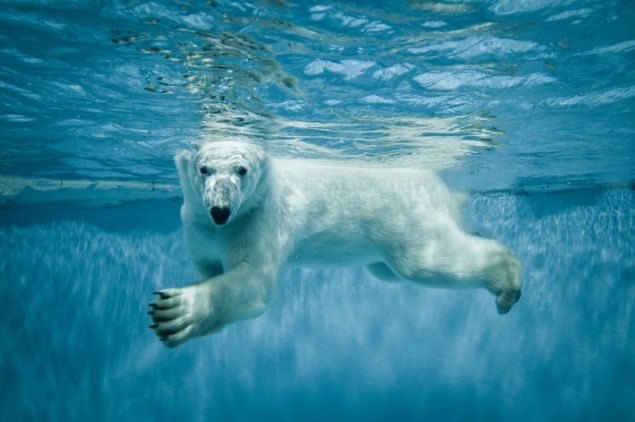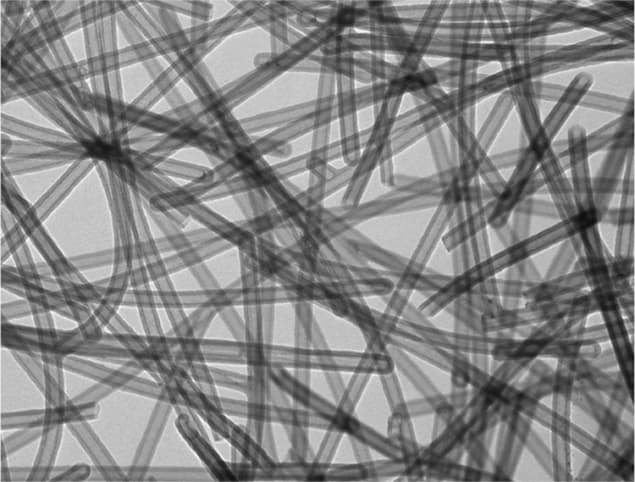
Taking inspiration from the microstructure of polar bear hairs, which are hollow and waterproof, researchers have made a new, super-elastic lightweight carbon tube aerogel that is an excellent thermal insulator. The material could find use in architecture and aerospace applications – especially those employed in extreme environments.
Unlike human hair or the hair of other mammals, polar bear hairs are hollow and contain a cavity running through their centre. The shapes and spacings of these cavities give polar bears their characteristic white coats but they are also responsible for their exceptional heat-holding capacity, water resistance, elasticity and light weight.
An aerogel block
To mimic this structure, a team led by Shu-Hong Yu, Jianwei Liu and Yong Ni of the University of Science and Technology of China (USTC), fabricated hollowed-out carbon tubes and wound these into an aerogel block.
The researchers began by making a cable hydrogel from tellurium (Te) nanowires as a template coated with a carbon shell. They then made a carbon tube aerogel (CTA) from this hydrogel by super-critically drying it and then calcinating it in an inert atmosphere (of argon) at 900°C for three hours to remove the Te nanowires.

“Thanks to its unique microstructure, the CTA boasts excellent thermal insulation properties and is super-elastic,” explains Yu. Indeed, it has rebounding speed of 1434 mm/s, which is the fastest of all traditional elastic materials as measured using a standard test involving a falling steel ball. This makes it even more elastic than polar bear hair itself.
Its excellent thermal conductivity, which is lower than that of dry air, at just 23 mW/m/K comes from the hollow structure of the carbon tubes. This is because their inner diameter (of 35 nm) is smaller than the mean free path of air (75 nm). The thermal conductivity of the material remains intact even after being stored for 120 days at 56% relative humidity at room temperature in air
Robust mechanical structure
The CTA is also lightweight with a density of 8 kg/m3, which is lighter than most reported thermally insulating materials and is non-wettable at a contact angle of 146°, adds Yu. And remarkably, it maintains its mechanical structure even after more than one million compress-release cycles at 30% strain and 10 000 cycles at 90% strain.

Squid-inspired proteins make new thermal switch
The researchers, reporting their work in Chem 10.1016/j.chempr.2019.04.025, expect the material to find applications in the aerospace industry, especially in extreme environments. Before such applications see the light of day, however, they will need to scale up its manufacture to industrial scales, they say.
“The diameter of our CTA is 4 cm and its height around 2 cm,” explains Yu. “While it is difficult to obtain larger CTAs at the moment because of the size limitations of the laboratory equipment we employed, we hope to solve this problem by collaborating with industrial partners,” he tells Physics World.



